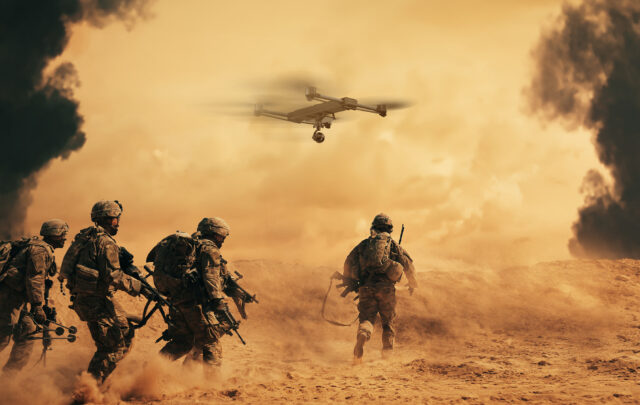The Evolution of Modern Warfare: Ukraine’s Drone Revolution
In the spring of this year, I found myself in Kyiv, where I was blindfolded and taken by car to a hidden manufacturing facility in western Ukraine. This secret factory is operated by TAF Drones, an organization established three years ago by Oleksandr Yakovenko, a visionary young entrepreneur driven to defend Ukraine against the Russian invasion.
Initially running a logistics company in Odesa, Yakovenko recognized that his country was facing a daunting challenge—battling a significantly larger and better-resourced enemy. With the clarification from the government that mass production of drones was urgently needed, he rallied his team, giving them just four hours to decide whether to stay and contribute to the military effort or leave.
Inside the Drone Factory
Upon entering the TAF facility, I was struck by the bustling atmosphere, resembling a high-energy tech workspace more than a traditional munitions factory. Over one hundred employees, many of whom are women, were immersed in their tasks, as captivating techno beats played in the background. They operated 3D printers, assembled carbon-fibre components, executed flight simulations, and made necessary adjustments to cameras and radio systems. One employee even described the environment as “meditative.”
The TAF facility is part of a network of clandestine manufacturing hubs scattered across Ukraine, all contributing to the country’s resilient defense strategy. This factory alone produces about 1,000 drones daily, noted for their advanced capabilities and affordability, with each unit costing approximately $500. While some drones serve surveillance purposes and others facilitate supply transfers, the majority are armed with explosives and guided by operators watching via video feeds, flying directly into targeted threats. One manager demonstrated a video capture of a drone eliminating a rocket launcher—accomplishing this feat at a fraction of the cost that Russia invests in its military technology.
Tactical Advantages Through Innovation
As Russia’s military entered Ukraine equipped for traditional land warfare, Ukraine forged modern guerrilla tactics utilizing drone swarms to counteract. This innovative approach has resulted in significant losses for Russia, including an estimated million casualties, with around 80% attributed to drone warfare as of 2024.
One of the most notable instances of this strategy was witnessed in June, when over one hundred Ukrainian drones struck targets deep within Russian territory, damaging around twenty military aircraft in a display of disarray that hadn’t been seen since World War II. The Ukrainians published an audacious video of the operation, enhancing public morale and drawing attention to their tactical ingenuity.
The Future of Warfare and Defense Technology
As the landscape of modern warfare evolves, U.S. military officials are observing developments in Ukraine with increasing urgency. U.S. defense strategies have largely revolved around complex, high-cost weaponry, but the effective use of affordable drones in Ukraine poses significant questions regarding America’s military advantage. David Ochmanek, a former Pentagon official, emphasizes the necessity for rapid adaptation: “We are not moving fast enough.”
- Drone Production: TAF drones are indicative of a shift towards affordable, effective warfare technology.
- Ukraine’s Casualty Estimates: The war demonstrates that conventional military strategy can falter against guerrilla tactics leveraging technology.
- AI and Future Conflicts: The American military is urged to embrace innovation to prepare for potential conflicts, especially against nations like China.
Emerging Challenges on the Battlefield
The escalating conflict highlights a critical challenge for both Ukraine and Russia: the pursuit of technological supremacy in warfare. Despite Ukraine’s progress, the ongoing threat remains imminent as both sides attempt to innovate quickly.
| Drone Characteristics | Details |
|---|---|
| Daily Production | 1,000 drones |
| Cost per Drone | $500 |
| Purpose | Surveillance, supply transport, attack |
| Estimated Impact on Russian Forces | 80% of losses due to drone operations |
The outcome of this conflict may redefine the future of military operations, emphasizing the necessity for adaptability and rapid innovations in counter strategies. Both nations are set on a pursuit for ultimate dominance in the airspace and on the ground, indicating a significant transformation in warfare norms.














